Time Management – In Civil Engineering and in LIFE!

Time management is a core skill that can make or break your productivity, reduce stress, and help you hit your goals consistently. This is a process of planning and exercising conscious control over how much time to spend on specific activities — to maximize effectiveness, efficiency, and productivity.
Let’s talk time management specifically for civil engineers, where juggling design work, field coordination, meetings, and deadlines are a daily reality.
Why Is Time Management So Important?
- Reduces Stress – Knowing what you need to do (and when) helps you avoid last-minute scrambles. And with last minute scrambles, that’s where mistakes and problems tend to creep in.
- Improves Focus – You stop reacting to your day and start leading it. It may be best to just let the phone ring! If I had to stop my task every time someone called or texted, I’d never get anything done. Set aside “call back hour” or something so you’re not constantly switching gears.
- Creates Space for What Matters – Better time use = more freedom for family, growth, or rest.
- Enhances Reputation – Meeting deadlines and being dependable builds trust. To be known as the “go to” person for top projects, questions or even internal trainings is job security in itself.
Why Civil Engineers Struggle with Time Management?
Civil engineers juggle many roles—design, project management, site visits, client communication, documentation, and regulatory compliance. Constantly switching contexts reduces focus and increases the risk of delays or errors. Every time you stop a task you tend to backtrack when you restart. It’s a very inefficient way of working.
Frequent changes from clients, architects, or other stakeholders can derail timelines. Managing and implementing revisions—especially late in the project—consumes valuable hours and breaks workflow momentum. An understanding of the dynamic models in Civil 3D can help eliminate major rework. We’ll explore some of that later in the article.
My #1 time killer?? Unproductive meetings!! I like to have a 30 minute max meeting time. If a meeting lasts more than that, it typically means we aren’t communicating properly leading up to that meeting.
Implement a Weekly Review Process
Every Friday (or Monday AM), do a 20-minute check-in:
- What’s due next week?
- Any slowdowns from clients or field?
- What do you need from others? What do others need from you?
Use this time to prioritize, delegate, or clarify scope creep.
Time Wasters to Eliminate
|
Time Waster |
Solution |
|
Long, aimless meetings |
Ask for agendas & set time caps |
|
Constant field interruptions |
Batch communication at set times |
|
Manual data reports |
Use Civil 3D Project Explorer, QTO or others |
|
Searching for old files |
Organize templates, folders & file naming conventions |
Standardize & Automate Repetitive Tasks
If you’re using Civil 3D, Revit, or similar tools, spend time upfront creating:
- Templates (for alignments, profiles, and sheets)
- Label styles and surface settings
- Scripts/macros or Project Explorer reports for common deliverables
That prep saves hours on every project and eliminates rework.
Build “Design Sprints” into Your Workflow
Group similar tasks (e.g., drainage layout, grading, or plan set cleanup) into focused sessions. Avoid switching between tasks (like emails and grading) every 10 minutes — it destroys your momentum.
Here are MY 5 time management killers when using Autodesk Civil 3D, especially in production-heavy environments.
1. Poor Template and Standards Setup
- Why it kills time: Inconsistent layers, styles, label settings, and object defaults mean users must adjust each item manually. Opening past projects to drag styles into new projects, instead of simply adding them to your template, is a huge time suck.
- Examples: Labels don’t match project standards; styles must be constantly changed; alignments don’t default correctly, etc.
- Fix: Invest time in a well-developed Civil 3D template (DWT) with standardized styles, layers, and settings. Train on your template!! This is overlooked way too often. A good training on your template, and refresher trainings throughout the year, will help users really understand the styles and power of your Civil 3D template.
2. Lack of Understanding of Dynamic Model Behavior
- Why it kills time: Civil 3D is model-based and dynamic. When users don’t understand object dependencies (e.g., alignmentàProfileàCorridoràSurface), they make changes in the wrong order or overwrite work.
- Examples: Editing a surface that’s tied to a corridor without realizing it will update everything. Manually adjusting a structure rim elevation and breaking the tie to a surface.
- Fix: Train users on Civil 3D’s object relationships and leverage data shortcuts (DREFs) effectively.
3. Inefficient Data Management and DREF Usage
- Why it kills time: Misuse or overuse of Data Shortcuts can cause broken references, bloated drawings, or rework when objects don’t sync properly.
- Examples: Teams work on different copies of the same alignment or surface; syncing causes confusion or duplication.
- Fix: Set clear folder structures and naming conventions for data shortcuts. Use Source drawings wisely. Ask yourself if you really need a DREF, or does an XREF suffice in this situation?
4. Large File Sizes and Drawing Bloat
- Why it kills time: Large drawings slow down Civil 3D performance, increasing load/save times and causing crashes or lag.
- Examples: Unpurged files, excessive xrefs, unused styles, or copying/pasting from other drawings.
- Fix: Regularly use -PURGE (Regapps), AUDIT, and CLEANUP. Use external references properly and avoid copying unknown content from other DWGs.
- Here’s a past article on file management - https://www.augi.com/articles/detail/civil-3d-file-management
5. Manual Drafting vs. Using Civil 3D Tools
- Why it kills time: Users sometimes revert to AutoCAD-style drafting (lines, text, blocks) instead of using Civil 3D’s dynamic tools. Especially annotation!
- Examples: Manually drafting profiles or labeling elevations instead of using profile views or surface labels. Manually labeling a structure and not fully understanding structure labels.
- Fix: Train staff to use Civil 3D objects (alignments, feature lines, surfaces, labels) instead of dumb geometry and text. Can it replace 100% of manual drafting? Absolutely not! But when you go to annotate something, just ask yourself if there’s a style for that.
Time Management Techniques That Work for me
1. Daily and Weekly Planning
- Spend 10–15 minutes at the start/end of your day to plan. I begin and end each day with a quick task list that I physically write down, and yes, I waste a lot of paper. But how satisfying is it when you go to close out your day and you get to scratch items off that list!!
- Weekly overviews help spot upcoming bottlenecks.
2. The Eisenhower Matrix
- Urgent vs. Important. However, a common pitfall here is determining what is also important or urgent to others, not just yourself. So consider that sometimes getting to a task that may not be important to you, but important to someone else, will save you a lot of time and interruption from the other party!
- Helps you prioritize instead of just react.
3. The 2-Minute Rule
- If a task takes less than 2 minutes, do it immediately. Get it out of the way. I live by this daily. The first 15 minutes of each day I review my tasks, then the next 30 are dedicated to the little things. An email, 1 quick redline note, a response to a meeting request, or setting up meetings.
- Prevents minor tasks from snowballing. How often do you discuss for 30 minutes or more a 2 minute task? How many times has someone interrupted you waiting on you to complete a 2 minute task? How many phone calls do you get asking if you received an email, when you could have simply responded? Don’t let a 2 minute task snowball into an hour of time suck, just get it done!
4. Align Tasks with Your Energy Levels
- High-focus tasks during peak energy (usually mornings). My peak hours are usually 6am-8am, and 9pm-11pm. Mid-day I’m a bit sluggish and tend to get distracted. Thankfully over the past couple years I’ve been in a place where if I feel my productivity slipping, I bounce for the day! Not literally jump up and down, but I leave, I go to the gym, I coach softball, so that gives me an escape. I remove myself momentarily knowing I won’t be productive, and I replace those “lost hours” with higher productive hours.
- Low-focus tasks (emails, admin work) when energy dips. We all have tasks we dread and mine are the boring admin related tasks. Timesheets, billings, contracts, HR issues, etc, etc. But they have to get done! Most of them don’t take a lot of brain power, so I tend to focus on those either right before or after lunch when I’m distracted by having to choose what taco joint to eat at!
Conclusion
I know this wasn’t a picks and clicks type of article, but what good are the picks and clicks if you don’t manage your time wisely? I hope this helps or gives you some ideas on how to more efficiently run your days and weeks ahead!
BIO: Shawn has been a part of the design engineering community for roughly 20 years in all aspects of design, construction and software implementations. He has implemented and trained companies across the Country on Civil 3D and other infrastructure tools and their best practice workflows. Shawn can be reached for comments or questions at sherring@prosoftnet.com.
